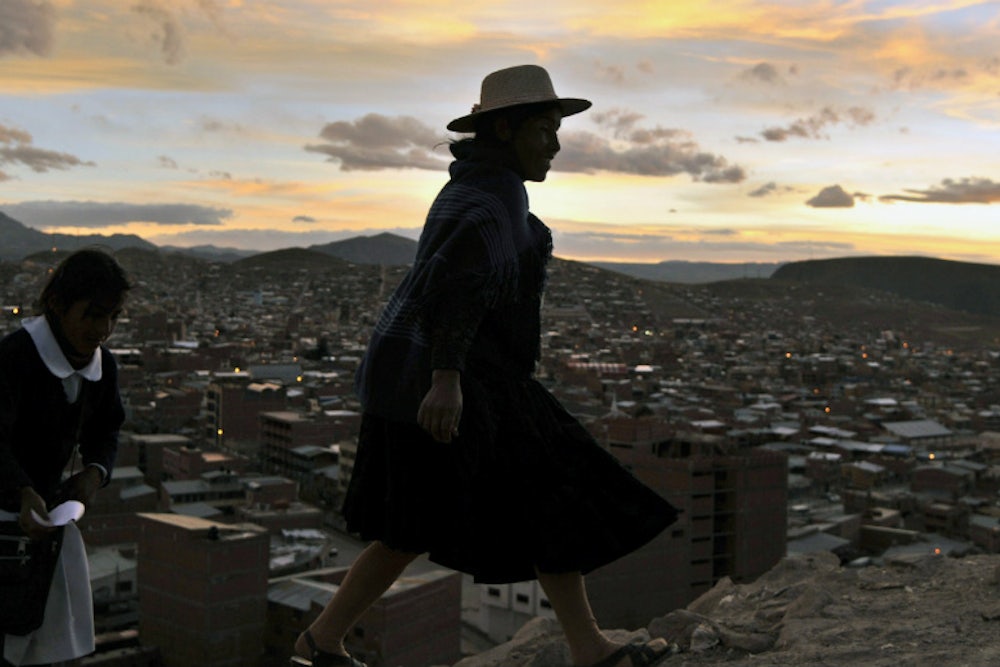The most stirring art has the ability to make us stop, think, and even act, but a new interactive documentary made in Peru may just help decide the political future of the whole country. Created as a result of collaboration between the University of Bristol and London-based Chaka Studio, the Quipu project relays the story of a recent and very dark moment in Peruvian history. As many as 300,000 women in rural areas of Peru were possibly hoodwinked into being sterilized during the mid-to-late 1990s, all in the name of bringing an end to poverty.
The scale of the heinous medical campaign remained buried until recently, as the village areas most affected did not know that both neighboring and far-flung areas had also been hit. Various legal cases on the issue brought against right-wing former-president Alberto Fujimori have hit the buffers and the local headlines, but the story has largely remained unknown outside the urban centers of Peru.
“I was working for Amnesty International in Peru in the 1990s and nobody knew this was going on,” says Matthew Brown of the University of Bristol. “Awareness has been growing in the last three years, partly because of our project and partly because of the efforts of victims groups. These women were sterilized at 20 and now they are coming up to 45 with no one to look after them in old age. That was the community welfare safety net.”
Brown had been looking for a creative way to get the story out there via social media, but it was not until he and fellow researcher Karen Tucker met with the team behind production company Chaka Studio that the solution became clear. The teams hooked up via Arts and Humanities Research Council (AHRC)-funded React Hub, an organization set up to bring academics, artists, and creative businesses together.
Within months the team were heading off to Peru, teaming up with victim support groups and launching their ambitious plan to mix new tech with old and give those women a voice via £50,000 of AHRC funding.
“I am Peruvian, so I had known about it a while,” says Chaka Studios' Rosemarie Lerner, who is co-director of the Quipu Project. “At first we wanted to make a film, but we found a better way to work with these communities.”
This collaborative solution was to create an online archive of women's voices, telling their stories in their native tongue. This would then form the basis of a multimedia documentary with the women to the fore. Most importantly, the women could hear the voices of others like them as the project was happening—many speaking Quechua rather than Spanish, which is the language of government. Those who phone in to a dedicated phone line can either listen to a story or record their own. Cheap mobile phones have been distributed throughout villages by local advocates and activists, with radio ads also helping to draw in growing numbers of contributors, who can also pass on their stories via landlines.
“Many women just want to tell their story as a personal process and many had no idea it had happened to others,” says Lerner. “Others see the benefit of sharing as adding political pressure. They want an apology and they want things to change. Right now the politicians want to blame the doctors who carried out the sterilizations and vice versa. Many women see these sterilizations as being carried out to control the population and stop uprisings. It was the poorest who were hit. Those who had no option but to use the public health programme.”
The political pressure that the Quipu Project has unwittingly become a part of could well swing the 2016 elections, where Keiko Fujimori, daughter of Alberto, is attempting to become president. Many are concerned that she would use a win to release and excuse her father, who is currently serving a lengthy prison term for embezzlement and bribery. Opponents are primed to bring the issue of the forced sterilizations to the hustings, with international attention and pressure being drawn by the testimonies of the women who feature in this new form of documentary.
The project is due to be completed in 2015 and is snowballing as the team visit different parts of Peru to make contacts and initiate recordings. When women hear their stories replicated by others they are often shocked by the scale of the sterilizations, but this also makes them keen to share their own testimony. The team have so far covered Huancabamba in the North Andes, Independencia District in the South Andes, and are about to set off for the Province of Anta in the South Andes to work with activists.
While the results will be moderated, designed, cut, and sub-titled the team are still steadfast in their belief that it is the women's voices that should be to the fore. To this end the full recording archives will remain online as both resource and reminder.
“I've come across lots of anthropological and ethnological studies where collected testimonies don't even make it into the appendix of publications,” says Brown. “We don't want everything mediated through the researcher. We want the words spoken to be available. We may have sub-titles, but it is so important to have these particular voices.”
This piece originally appeared at The New Statesman.
